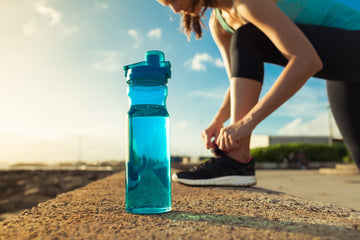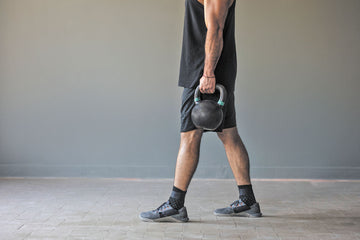There’s nothing quite like the convenience of having your own workout space — no crowded gyms, no waiting for machines, and no awkward encounters in the locker room. Whether you’re an early riser who loves a morning sweat session or someone who prefers to exercise after a long day, a home gym offers the ultimate flexibility.
But when it comes to setting up your own workout haven, the sheer number of equipment options can feel overwhelming. How do you decide what’s essential and what might end up collecting dust? The good news is that designing a home gym doesn’t have to be complicated. With a clear understanding of your goals, space, and budget, you can create a setup that suits your needs perfectly.
This guide will walk you through how to choose the right equipment, covering everything from cardio and strength training to recovery tools. Ready to turn your home into a fitness sanctuary? Let’s get started.
Step 1: Define Your Fitness Goals
Before you dive into buying gym equipment, take a moment to think about your fitness goals. Are you aiming to build strength? Improve endurance? Increase flexibility? Or perhaps relieve stress with regular movement?
Here are a few goal-based categories to consider:
Strength Training: Ideal for building muscle, toning, and boosting metabolism.
Cardio Training: Great for heart health, endurance, and fat loss.
Flexibility and Mobility: Perfect for recovery, injury prevention, and overall movement quality.
Functional Fitness: Focuses on movements that mimic everyday activities, enhancing core strength and balance.
Knowing your priorities will help you focus on the most relevant equipment, saving you time and money.
Step 2: Assess Your Space
The amount of space you have available will significantly influence your equipment choices. You don’t need a massive basement gym to get a solid workout. In fact, with today’s multifunctional and compact fitness gear, even a small corner of your living room can become a great workout spot.
For Small Spaces:
Consider portable and foldable equipment like resistance bands, adjustable dumbbells, or a 2-in-1 Cordless Jump Rope for a cardio boost without taking up much space.
A Foldable Pedal Stretch Plate can offer a great stretching and strength-training experience without needing a dedicated workout zone.
For Larger Spaces:
If you have a garage or spare room, you might invest in larger items like a squat rack, a bench, or even a rowing machine.
Combine this with floor mats, weights, and versatile gear like a Power Press Push-Up Board for a complete strength and conditioning setup.
Step 3: Consider Your Budget
Creating a home gym doesn’t have to break the bank. With a strategic approach, you can prioritize what you need most and build over time.
Budget-Friendly Essentials:
Resistance bands
Jump ropes
Adjustable dumbbells
Stability balls and yoga mats
Mid-Range Equipment:
Ab rollers for core strength
Weighted jump ropes for cardio
Kettlebells or sandbags for functional strength training
High-End Investments:
Cardio machines like treadmills, rowing machines, or exercise bikes
Multi-station home gyms for a full-body workout
Massage and recovery tools like a Vibrating Massage Ball or an Electric Massage Foam Roller
Step 4: Choose Your Core Equipment
Now that you’ve assessed your goals, space, and budget, it’s time to pick the core pieces of your home gym.
✅ For Strength Training
Adjustable Dumbbells or Kettlebells: Versatile and essential for building muscle.
Ab Rollers: Target your core effectively. The 4-Wheel Abdominal Roller offers extra stability for beginners.
Push-Up Boards: Perfect for upper body strength and muscle activation.
Resistance Bands: Ideal for functional movements and adding intensity to workouts.
✅ For Cardio Training
Jump Ropes: The Weight-Bearing Skipping Rope can add resistance, making your workouts more challenging.
Bodyweight Exercises: Incorporate mountain climbers, burpees, and high knees for effective cardio.
Rowing Machines or Stationary Bikes: Excellent for low-impact endurance training.
✅ For Recovery and Mobility
Yoga Mats: An Insulated Fitness Yoga Mat offers extra comfort for stretching or floor exercises.
Foam Rollers: The Electric Massage Foam Roller can relieve muscle tension and improve circulation.
Acupressure Mats: Great for promoting relaxation and reducing muscle tightness.
Step 5: Don’t Forget About Recovery
Recovery is just as important as the workout itself. Proper rest and recovery prevent injuries, reduce muscle soreness, and enhance performance.
Consider incorporating these into your routine:
Foam Rolling: Break up muscle knots and improve flexibility.
Massage Balls: Target tight areas for deep-tissue relief.
Acupressure Mats: Support relaxation and tension relief, especially after intense sessions.
Step 6: Create a Motivating Atmosphere
Your workout space should inspire movement. A few small adjustments can make a big difference:
Good Lighting: Natural light is best, but bright LED lights work well too.
Mirrors: Help with form correction and create a sense of space.
Music or TV: Set up a speaker or mount a TV for workout videos or playlists.
Organized Gear: Use storage racks, baskets, or wall mounts to keep everything tidy.
Build the Gym That Works for You
Creating your perfect home gym is about striking the right balance between your goals, available space, and budget. Start small if needed, with versatile, multi-purpose equipment that can evolve with your fitness journey.
Remember, your gym doesn’t have to be extravagant to be effective. Whether you’re doing bodyweight workouts on a yoga mat, strengthening your core with an ab roller, or unwinding with a massage ball, the key is consistency and enjoyment.
Invest in the tools that make you excited to move — and celebrate the fact that every workout you do at home is a step toward a stronger, healthier you.
Happy training!








